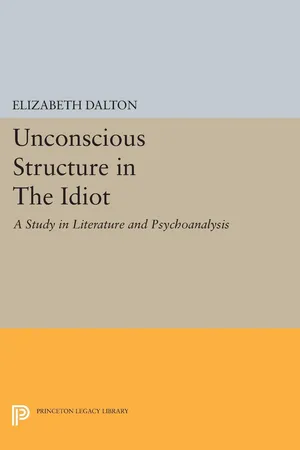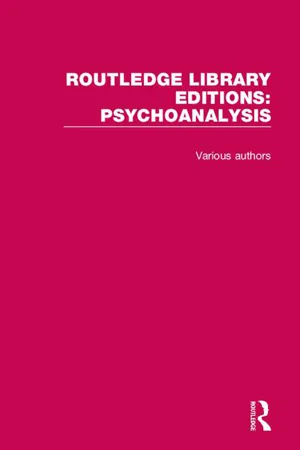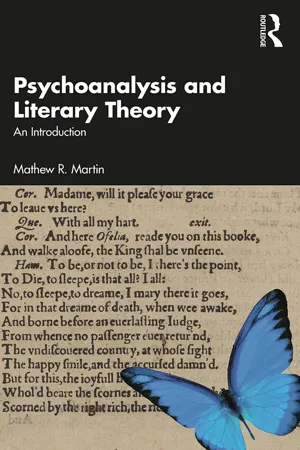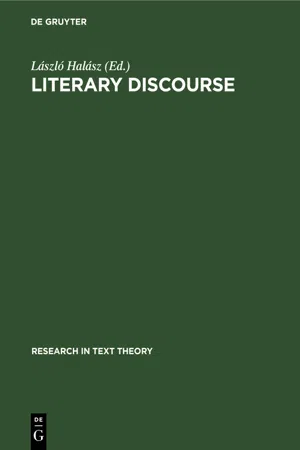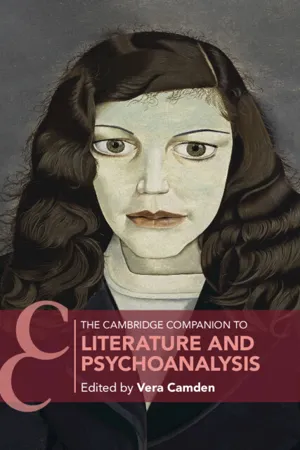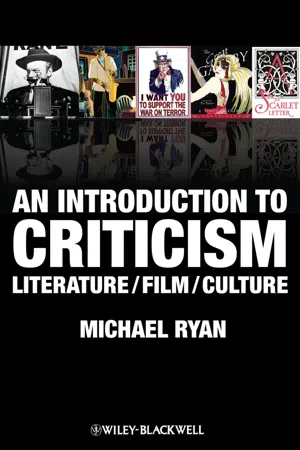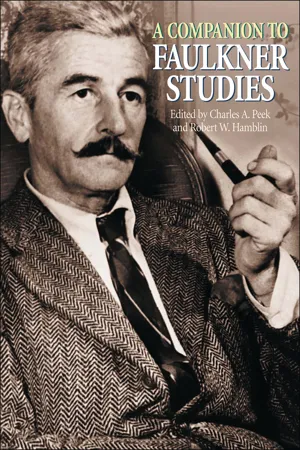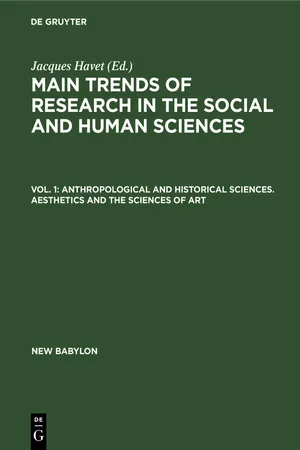Literature
Psychoanalytic Literary Criticism
Psychoanalytic literary criticism applies principles from psychoanalysis to analyze and interpret literature. It explores the psychological motivations and unconscious desires of characters, authors, and readers, often focusing on themes such as repression, sexuality, and the Oedipus complex. This approach seeks to uncover hidden meanings and symbols within literary texts, shedding light on the psychological dimensions of storytelling.
Written by Perlego with AI-assistance
Related key terms
1 of 5
10 Key excerpts on "Psychoanalytic Literary Criticism"
- eBook - PDF
Unconscious Structure in The Idiot
A Study in Literature and Psychoanalysis
- Elizabeth Dalton(Author)
- 2015(Publication Date)
- Princeton University Press(Publisher)
Psychoanalysis helps us to understand the tension of this dialectic within which creation takes place, by reminding us that literature is rooted in the gut and the genitals as well as in the brain, in the infantile and regressive aspects of psychic function as well as in the maturely integrated ego, in delusion and dream as well as in history, reality, and ra- tionality. In refusing to wall off a separate place for art and spirit, psychoanalysis insists on the continuity of all human experience. (Continuity, of course, does not mean equiva- 20 PART 1. THEORY lence or identity.) In this insistence that nothing human be regarded as alien, psychoanalytic method is bound to offend the squeamish. But in tracing the connections between literary art and primitive physical and psychic functions, and in suggesting that we may understand the literary text more fully by studying the expression of unconscious meaning in dreams, fantasies, and symptoms, psychoanalytic criticism does not demean the literary work. On the contrary, psychoanalysis enlarges and enriches the significance of literature by discovering, scrawled on the walls of the darkest and inmost caves of the mind, the pre- historic images and scripts that are the rudiments of art, and that implicate it absolutely in all human life. III. REPRESSION, THE UNCONSCIOUS, AND THE STRUCTURE OF THE LITERARY WORK Psychoanalysis begins from the premise that the outward shape and the explicit content of an expressive "text"— dream, symptom, or work of literature—do not exhaust its significance. Most literary criticism is based on the same assumption—that the text has a meaning that cannot be communicated directly, that must be evoked obliquely through imitation, symbol, allusion, and all the devices and stratagems of literature. - eBook - PDF
- Various(Author)
- 2021(Publication Date)
- Routledge(Publisher)
This was, I would argue, a dis- placement of the real power struggle-over the status of the literary critic and the integrity of the discipline. Literature was not really the issue at all. The problem was less whether the writer of literature was a coherent, fully integrated, conscious human subject than whether the writer of criticism was. In its rapprochement with New Criticism, or rather its willing self-denial within the constraints that compromise imposed, psychoanalysis supported a view of critical writing wholly at odds with its own theoretical roots. For psychoanalytic critics were implicitly willing to reassure the profession that a cri tic is not intersubjectively and phantasmatically implicated in his or her own observations, insights, and conclusions about literary texts; that neither the individual nor the social investment of desire-and certainly not the his- torically specific cultural organization of those investments-is at issue in critical writing; that, most remarkably, one should, as it were, properly re- main quite unchanged by anything one learned from the psychoanalytic study of literature. Literary criticism would be an activity able simultaneously to strengt hen the critic's ego and the existing structures of socialization. More- over, the discipline's theoretical, social, and political boundaries, with their seif-reinforcing idealizations, would remain secure. Instinctively, the conservative members of the profession have known that none of this can be guaranteed, that psychoanalysis as a body of theory implicitly undermines the restrictive contract it makes with academie disci- plines. Through the early 1970s-despite their cooptation by the widespread academie resistance to overt self-reflection within critical writing-psycho- analytic critics were nonetheless marked by the history of psychoanalytic theory with the contaminating possibility of self-knowledge. - eBook - PDF
A History of Literary Criticism
From Plato to the Present
- M. A. R. Habib(Author)
- 2008(Publication Date)
- Wiley-Blackwell(Publisher)
One of the interesting features of Freud’s account is that it (typically) ignores the entire history of its subject, in this case, aesthetics and literary criticism, almost psychoanalytic criticism 583 blundering onto the scene with its radically new insights, infusing yet another perspec-tive, drawn from psychoanalysis, into the repertoire of literary criticism. In this brief paper, Freud opens up a number of literary-critical avenues: the linking of a creative work to an in-depth study of an author’s psychology, using a vastly altered conception of human subjectivity; the tracing in art of primal psychological tendencies and conflicts; and the understanding of art and literature as integrally related to more general patterns of human activity. It is not difficult to be skeptical of Freud’s trains of reasoning, riddled as these are with leaps of imagination, logical inconsistencies, contradictions, and the molding of the available matter to the desired form of his interpretation. Yet his procedure in this paper demonstrates that the context of literary interpretation can be deepened into dimensions of individual and collective human subjectivity little explored hitherto. Beyond the immediately discernible themes and issues raised by a literary text, beyond its formal attributes, beyond its apparent entry into certain literary traditions, a text can be approached in terms of its probings of deeper, unconscious, impulses that lie hidden in recurring human obsessions, fears, and anxieties. Such paths will be further explored by Carl Jung, Northrop Frye, Lacan, and others. Freud on History and Civilization In later works such as Civilization and its Discontents Freud did indeed deal with social and religious phenomena as expressed in collective, as well as individual, psychology. - eBook - ePub
Psychoanalysis and Literary Theory
An Introduction
- Mathew R. Martin(Author)
- 2022(Publication Date)
- Routledge(Publisher)
1Freud and Literary Criticism1DOI: 10.4324/9781003219347-2As we saw at the beginning of the introductory chapter, psychoanalysis began with the first piece of Psychoanalytic Literary Criticism, Freud’s interpretation of Sophocles’s Oedipus Rex andShakespeare’s Hamletin light of his childhood memory. Psychoanalysis is “first and foremost an art of interpreting” Freud would later comment in Beyond the Pleasure Principle (1920). As we will see in this chapter, however, the art of psychoanalytic interpretation—psychoanalytic hermeneutics—is challenging: it is challenging in the demands it places on the text or work of art, and its theories and methods challenge many of the key concepts and methods of non-Psychoanalytic Literary Criticism.Oedipus Rex and Hamlet: Mimesis, Tragedy and Catharsis
Freud’s analysis of the Oedipus complex takes us back to some of the oldest concepts in the history of Western literary criticism: mimesis, tragedy and catharsis. In his Poetics, classical Greek philosopher Aristotle (384–322 BCE) defined artistic mimesis as the imitation of “people doing things” (52). These people “must necessarily be either good or bad” (52), Aristotle remarks, and this difference “marks off tragedy from comedy, since the latter aims to represent people as worse, the former as better, than men of the present day” (53). “A tragedy,” he continues, “is a mimesis of a high, complete action” (57). The imitation must be realistic (62), the characters must be noble, and the action or plot must be unified—i.e. it must have a causally connected beginning, middle and end (60–61)—and all other elements of the drama, including character, must be subordinate to it. Significantly, Aristotle argues that “in the particular actions themselves there should be nothing irrational, and if there is it should be outside the tragedy, like that of Sophocles’s Oedipus” (70). Peripeteiai, or reversals of the protagonist’s fortune, brought about by anagnorisis, or a moment of recognition or discovery, and culminating in a scene of pathos “involving destruction or pain” (65) are key elements in the plot of a tragedy, whose ultimate purpose or telos is to provoke the emotions of pity and fear in its audience in order to effect “the catharsis [purging] of such emotions” (57). Having thus defined tragedy as a genre, Aristotle then examines specimens of Greek drama in order to illustrate his definition, and Oedipus is one of his paradigmatic examples. Oedipus himself is precisely the kind of character to create pity and fear in the audience: he is “one who is not pre-eminent in moral virtue, who passes to bad fortune not through vice or wickedness, but because of some piece of ignorance, and who is of high repute and great good fortune” (66). The plot of the play is of the best kind: the irrational is excluded, and the reversal of fortune is brought about by a moment of recognition that is realistic and logical (72). Indeed, the play achieves the cathartic telos of tragedy superlatively, Aristotle declares: it is “so composed that even without seeing the action, a man who just hears what is going on shudders and feels pity because of what happens” (67). Importantly, however, the shudder of pity and fear that the audience experiences is also a spasm of pleasure. “Mimesis - eBook - PDF
Literary Discourse
Aspects of Cognitive and Social Psychological Approaches
- László Halász(Author)
- 2019(Publication Date)
- De Gruyter(Publisher)
ANTAL BÖKAY Literary Discourse: Psychoanalytic Study of Texts I would like to start my paper with a very general hypothesis, namely that psychoanalytic treatment of language can offer a special model for constructing the theory of literary discourse. The definition of the language of literature was an important aim of many theoretical studies but in spite of this we do not know today as much as the efforts have offered. I should like to show that the implicit theory of language that can be found in the writings of S. Freud can show a direction different from the structuralist theories. Psychoanalysis is a social science of the subject produced in a period when its proper philosophical construction was not possible. It gives a comprehensive explanation of the cognitive apparatus, analyzes the cognitive processes in the light of the experience of the self and the experience of the other - places the human being in a hermeneutic dimension. In my paper I try to make clear the implicit linguistic and philosophical features of some works of Freud, and describe their method and reconstruct their metatheory. The connection between psychoanalysis and language (see a summary -review by Olinich, 1984) had many different forms. First of all we often find a need to define the different levels of mental functioning as linguistic when language is a basic form of being opposed to non-linguistic forms. In this sense I shall refer only to Ricoeur (1970) and Kovel (1978) but the papers are plenty. Secondly in another sense the linguistics of psychoanalysis can be analyzed, saying that as the most important raw material of psychoanalytic therapy is given in words, it is probable that psychoanalysis has a linguistic background connected with the linguistic of his age (Forrester, 1980). Important studies have been written from the point of view of integration between psychoanalysis and linguistics. - Vera J. Camden(Author)
- 2021(Publication Date)
- Cambridge University Press(Publisher)
Literature and psychoanalysis draw from the heart of each other and in doing so foster new creations. For if psychoanalysis is a practice that offers amelioration of human suffering, literature is the source of that practice. Retrieving that source offers us a way to connect language not only with feeling, but also with action. As Felman asks, Can we rekindle the torch of literature and revitalize its dialogue with psycho- analysis, in rejuvenating and renewing both our search for, and our contact with, their common truth, as a perpetual reminder of what can never be forgotten, and simultaneously, as an act that is yet to come? 19 Freud, of course, depended upon literature for the defining “paradigm” of the prototypical event in the psychic life of the human subject. Writing to Wilhelm Fliess in 1897, he identifies the “gripping power” of the Oedipus complex discovered in his readings of Sophocles (and later confirmed in his reading of Shakespeare’s Hamlet): “the Greek legend seizes upon a compulsion of which everyone recognizes because he senses its existence within himself.” 20 In the power of literature to “seize” upon our humanity, and bring anagnorisis, or the recognition of truth in us and in our world, Freud recovered a tool for self-analysis from which he derived insights that led to scientific discoveries and clinical methods. Reading to Recover: Literature and Psychoanalysis 3 Literature remains the generative core and repository of the creativity that makes us human. For it was, after all, Freud who admitted, “Before the problem of the creative artist, analysis must, alas, lay down its arms.” 21 Such surrender strengthens practitioners of all stripes. Adam Phillips summarizes the situation: Indeed, so remarkable is [psychoanalysts’ transference to literature] . . . that it is perhaps the one thing that could be said to unite the increasingly disparate schools of psychoanalysis.- eBook - PDF
An Introduction to Criticism
Literature - Film - Culture
- Michael Ryan(Author)
- 2011(Publication Date)
- Wiley-Blackwell(Publisher)
4 Psychoanalysis and Psychology Major Texts Sigmund Freud, The Interpretation of Dreams Melanie Klein, The Psychoanalysis of Children John Bowlby, Attachment Donald Winnicott, Playing and Reality Jacques Lacan, Écrits Major Ideas ● The life of the mind is a mixture of cognition and emotion, conscious awareness and unconscious process, rational self-directed behavior and instinct-driven action. It is difficult therefore to take writers or artists “at their word.” One must also look behind what is said in a text and analyze what the psychic sources might be of the fantasies and emotions one encounters there. Texts are often themselves “symptoms,” indicators of illness or of a troubled personal history. But writers are also astute observers, and sometimes they describe psychological aspects of human life with great insight. They depict for us troubled emotions or upset relationships that resonate with our own lives or that allow access to general aspects of human emotional and psychic life. ● Psychoanalysis pictures the mind as part conscious and part uncon- scious. We all have an unconscious, a realm from which feelings well up An Introduction to Criticism: Literature / Film / Culture, First Edition. Michael Ryan. © 2012 Michael Ryan. Published 2012 by Blackwell Publishing Ltd. 44 Psychoanalysis and Psychology or thoughts emerge unexpectedly. It is part of “us” but we do not control its operations. Psychoanalysts believe it is where banished feelings, desires, and thoughts go that our conscious mind or ego cannot accept for one reason or another (personal history, social pressures, cultural norms, etc.). Some feelings and thoughts are repressed or pushed permanently out of consciousness because we find them threatening. Some experiences, such as traumatic events of abuse in childhood, must also be pushed out and repressed because they are too upsetting. They evoke feelings of helplessness and harm that the conscious self cannot tolerate. - eBook - PDF
- Charles Peek, Robert W. Hamblin, Charles Peek, Robert W. Hamblin(Authors)
- 2004(Publication Date)
- Greenwood(Publisher)
the castration complex . . . embodies the law that founds the human order itself" (14). Because identity is constructed on an unforgettable psychic trauma, the Oedipal complex and the castration com- plex are ceaselessly recurring paradigms in psychoanalysis and in art. Accord- ing to Elizabeth Wright, these two complexes are the "raison d'etre of the psychoanalytic process" (15). In his essays on art and literature, Freud goes so far as to argue that the object of the creative enterprise is "to allay ungratified wishes" (13:187) suppressed in the moment of ego formation. The application of psychoanalytic principles to literary studies has undergone a number of significant developments in the past decades. Early Psychoanalytic Literary Criticism tended to psychoanalyze the author. A famous example is Marie Bonaparte's book-length study of Edgar Allen Poe, published in 1933, which reads Poe's fiction as an expression of the author's pathology, an unre- solved passion for his dead mother. Such studies were followed by psycho- analyses of fictional characters, like Frederick Crews's book, The Sins of the Father: Hawthorne's Psychological Themes (1966), which argues that Hawthorne's characters are driven by Oedipal desire. Both such approaches have been subject to the charge of reductivism; that is, they seem to reduce the meaning of a text to a set of pathological symptoms, and the single-minded focus on either the author or the characters prevents the literary critic from con- sidering textual figurizations of psychological meanings. Another controversial psychoanalytical critical practice, sometimes termed vulgar Freudianism, applies an oversimplified version of Freudianism (particularly Freud's notion that sexuality structures the psyche) directly to the text and identifies sexual symbology, usually phallic or yonic (concave/female) symbols. An important critical development, archetypal criticism, derives from the theories of Carl G. - Jacques Havet(Author)
- 2019(Publication Date)
- De Gruyter Mouton(Publisher)
636 Mikel Duf renne et al. 6. T H E P S Y C H O A N A L Y T I C A L A P P R O A C H , by Jean-François Lyotard* The request that prompted these notes only seemed to be simple; in appear-ance, it required a survey of the research carried out in a specific scientific field; in fact it demands no less than the constitution of its subject-matter. Indeed, there is no hope of complying with this request unless the concepts of 'expression' and 'psychoanalytical study (of literary and artistic expres-sions)' are defined; on examination of the 'principal trends' in question it appears that the definition and scope of these terms are the cause of diver-gences between current trends that for the most part are not explicit. Rather than produce a 'scientific' evaluation which would be a fiction, it seems to us more appropriate to steer a course through the maze of those current trends, in the wake of the problem created by the terms 'expression' and 'psycho-analytical study (of literary and artistic expressions)'. 1 Theorie des Komischen (1968); FLEMMING, 'Das Problem von Dichtungsgattung und -art' (1959); FRIEDRICH, Die Struktur der modernen Lyrik (1956) (English trans-lation, The Structure of Modern Poetry, 1974); GALINSKY, 'Literary criticism in literary history' (1964); GRAUMANN, 'Zur Psychologie des kritischen Verhaltens' (1959); GRIFFIN, 'The uses and abuses of psychoanalysis in the study of literature' (1951); HARDING, Experience into Words. Essays on Poetry (1963); HOLLAND, The Dynamics of Literary Response (1968); Imago.- eBook - PDF
- P. Rawlings(Author)
- 2007(Publication Date)
- Palgrave Macmillan(Publisher)
3 the genius of the unconscious: psyc h oanalytic criticism julie rivkin julie rivkin Psychoanalytic critics are drawn to Henry James, and how could they not be? The genius of “consciousness” is also—and necessarily—the genius of the unconscious (if such a paradox makes sense). James’s haunted figures all evidence the way in which the mind is doubled, and the more extensive the charting of its surface, that Jamesian method of using “reflectors,” the more one’s attention might be drawn to the influence of unrecorded depths. Moreover, it is hard to find a preoccupation of psychoanalysis that is not also a preoccupation of James and of his critics. Narrative, reading, representation, knowledge, secrecy, the uncanny, gender, sexuality, repression, the family, loss, identification, desire, transference—the list of psychoanalytic topics in James studies is not easily exhausted. Given the extent of this list, and of the psychoanalytic criticism of James, I cannot attempt a comprehensive summary here. Instead, what I offer, in the first part of this essay, is an examination of some striking moments in the psychoanalytic criticism of James, moments when critics come to new understandings of what the psy- choanalytic project might be. What follows, in the second part, is my own intervention, a reading of The Ambassadors and The Wings of the Dove that responds to the current work in gender and queer theory on the dynamics of identification and desire. The psychoanalytic critics who make guest appearances in this fi rst fi section, then, are Edmund Wilson, Shoshana Felman, John Carlos Rowe, Dennis Foster, Kaja Silverman, Eve Kosofsky Sedgwick, Judith Butler, Michael Moon, and Eric Savoy. The sequence might be described as the move from a traditional Freudian criticism, through various kinds of Lacanianism, including that of Slavoj Žižek, and into contemporary work 59 60 palgrave advances in henry james studies in queer theory and psychoanalysis.
Index pages curate the most relevant extracts from our library of academic textbooks. They’ve been created using an in-house natural language model (NLM), each adding context and meaning to key research topics.
